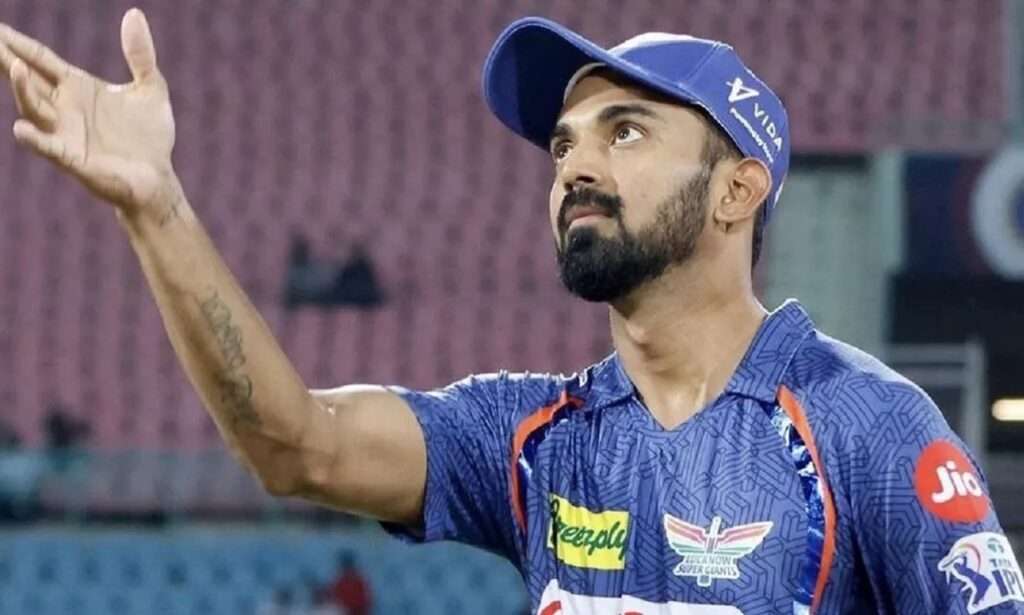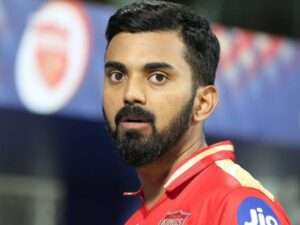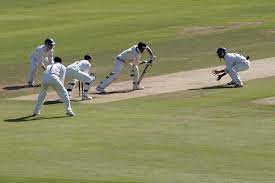
KL Rahul reflects on Lucknow Super Giants' IPL opener
KL Rahul reflects on Lucknow Super Giants’ IPL opener
New Delhi : Lucknow Super Giants skipper KL Rahul didn’t dwell much on their 20-run loss to Rajasthan Royals in their IPL opener but noted that no team had mastered the Powerplay yet this season. With the introduction of the two-bouncer rule per over, LSG struggled in the first six overs, falling to 47 for 3 in pursuit of 194. Both Rahul and Devdutt Padikkal underwent concussion protocols after being hit on the helmet.
Rahul acknowledged the significance of the Powerplay and felt 194 wasn’t an insurmountable target. Despite losing quick wickets, he found it positive that his team fought back. He emphasized the need to learn from their mistakes and improve.

Happy to start the season with a half-century, Rahul credited coach Justin Langer for bringing calmness to the dressing room, highlighting Langer’s coaching successes with Australia.
Also Read : Chelsea Finds Striking Solution: Nüsken Leads Charge in Victory
What is Powerplay in Cricket?
Powerplay cricket refers to a phase within limited-overs cricket matches, typically seen in formats like One Day Internationals (ODIs) and Twenty20 (T20) cricket. During the Powerplay, specific rules and fielding restrictions are applied for a set number of overs at the beginning of each inning. The main features of Powerplay cricket include:
- Fielding Restrictions: During the Powerplay overs, a limited number of fielders are allowed outside the 30-yard circle, which is closer to the batsmen. This makes it easier for batsmen to score runs, particularly boundaries, as there are fewer fielders patrolling the boundary.
- Aggressive Batting: Batsmen often adopt an aggressive approach during the Powerplay overs to capitalize on the fielding restrictions. They aim to score as many runs as possible, especially boundaries, to give their team a strong start.
- Bowling Tactics: Bowling teams strategize to minimize the damage during the Powerplay overs. They may deploy attacking field placements and variations in bowling to restrict the opposition’s scoring rate and pick up early wickets.

Powerplay in Cricket - Strategic Timeframe: The Powerplay typically lasts for the first 10 to 20 overs of an inning, depending on the format of the match and the specific rules governing it. This phase sets the tone for the rest of the inning and can significantly impact the final outcome of the match.
- Match Strategy: Teams often plan their batting and bowling strategies around the Powerplay. A strong performance during this phase can provide momentum and put pressure on the opposition, while a weak showing can lead to an uphill battle for the batting team or an advantage for the bowling side.
Overall, Powerplay cricket adds an element of excitement and strategy to limited-overs matches, as teams strive to make the most of this crucial phase to gain an early advantage or claw their way back into the game.
What is Concussion Test Protocol In Cricket
Concussion protocols are a set of guidelines and procedures implemented in sports, including cricket, to address and manage head injuries or concussions sustained by players during a match or training. These protocols are designed to prioritize the health and safety of players and typically involve the following steps:
- Immediate Assessment: When a player sustains a head injury or concussion, immediate assessment is conducted by the team’s medical staff or physiotherapist. This assessment includes evaluating symptoms and conducting neurological tests.
- On-Field Decision: If there is suspicion of a head injury or concussion, the on-field umpires and match referee are informed. They make a decision whether the player can continue playing or needs to be removed from the match.
- Substitute Player: If a player is deemed unfit to continue due to concussion, they are immediately substituted out of the match, and a replacement player is allowed to take their place.
- Medical Clearance: Players who sustain concussions typically require medical clearance before they can return to play. This clearance ensures that the player has fully recovered and is not at risk of further injury.
- Follow-Up Monitoring: Following a concussion, players are closely monitored for signs of recovery. Regular check-ups and assessments are conducted to track the player’s progress and ensure they have fully recovered before returning to play.
These concussion protocols are essential for safeguarding the well-being of players and ensuring that any head injuries are properly managed to prevent long-term health consequences.





